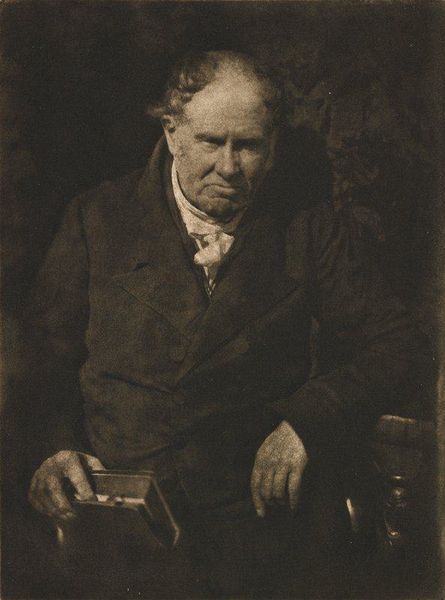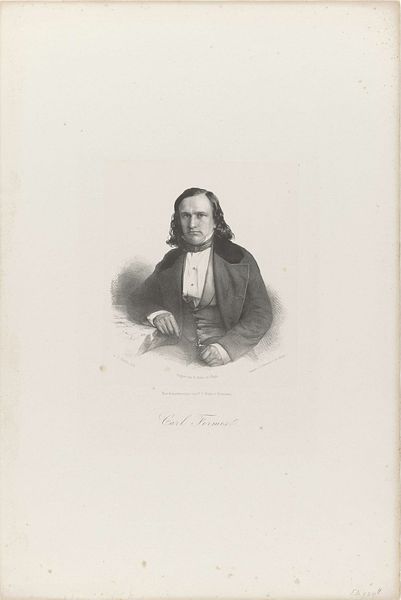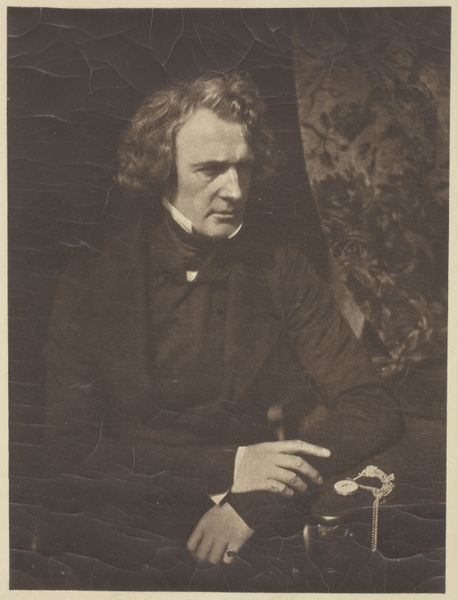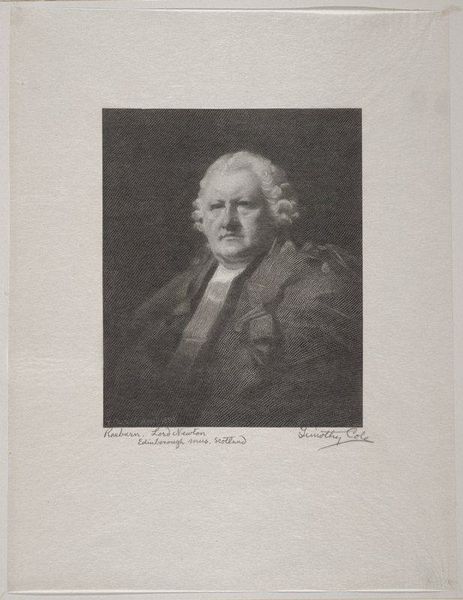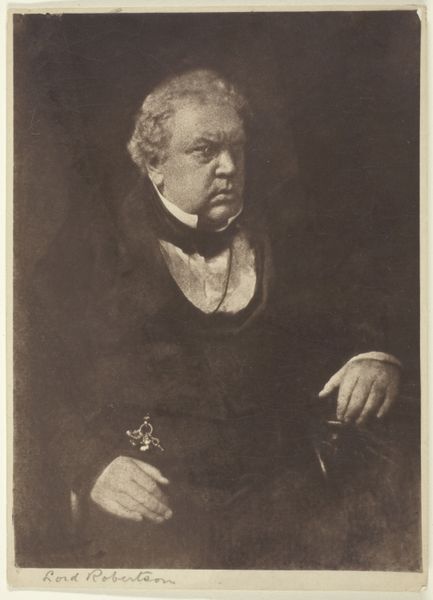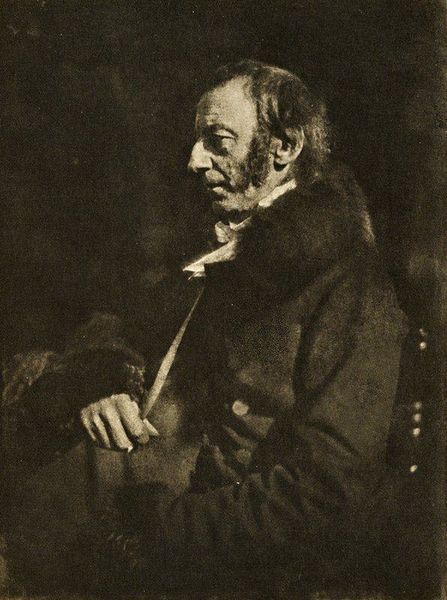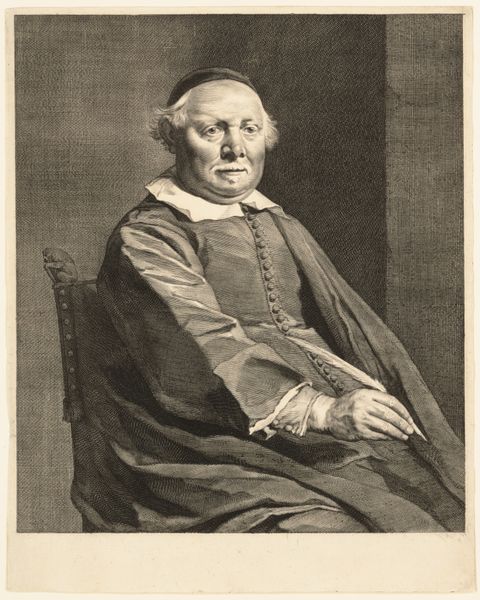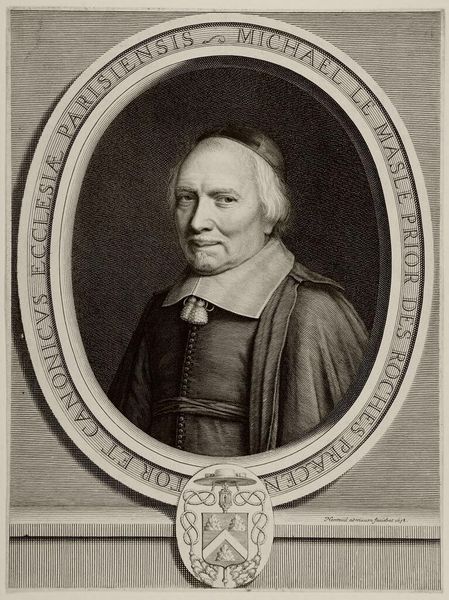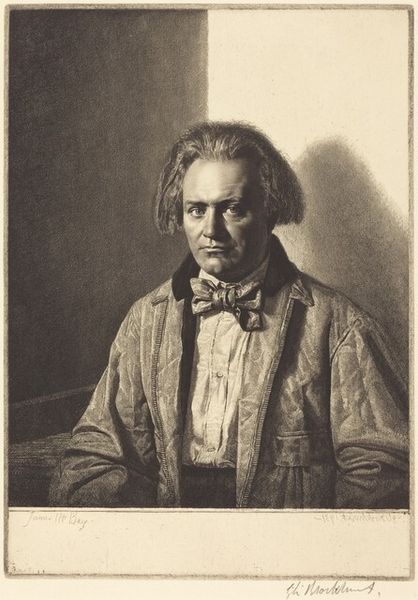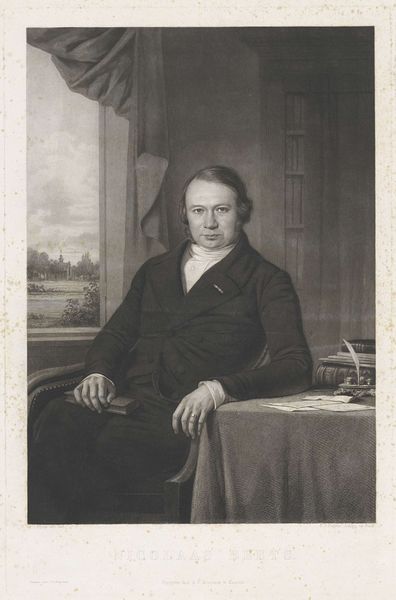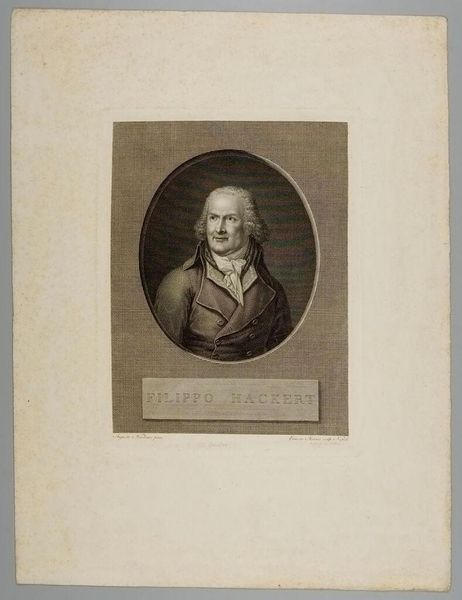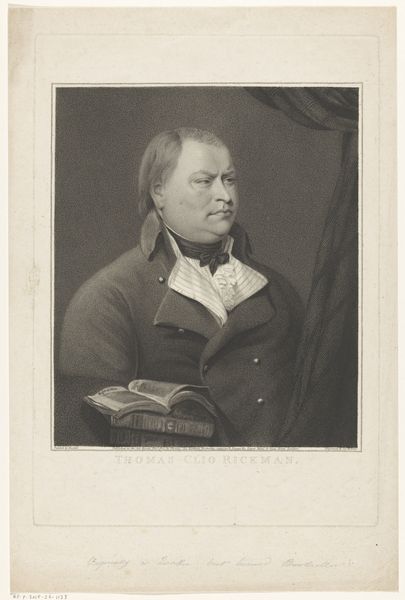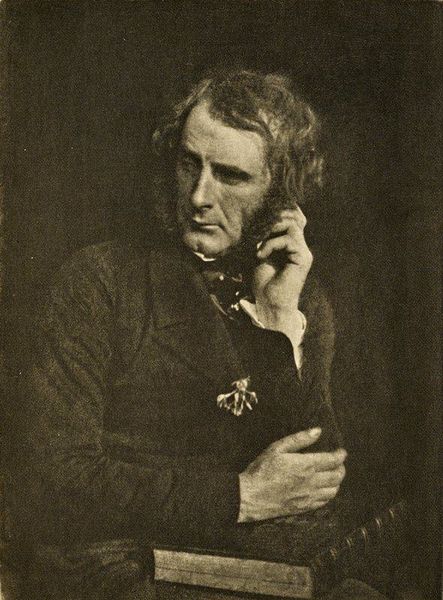
-Christopher North- (Professor Wilson) c. 19th century
0:00
0:00
daguerreotype, photography
#
portrait
#
daguerreotype
#
photography
#
romanticism
#
portrait drawing
#
portrait art
Dimensions: 8 1/2 x 6 1/16 in. (21.59 x 15.4 cm) (image)
Copyright: No Copyright - United States
Curator: This daguerreotype, attributed to David Octavius Hill, immortalizes Christopher North, also known as Professor Wilson, sometime in the 19th century. Editor: The sepia tone imbues the portrait with an incredible solemnity, wouldn't you say? Almost melancholic. Notice the way the light falls, creating a stark contrast across his face. Curator: Absolutely. It's crucial to consider the sitter: Professor Wilson, a literary figure and prominent intellectual of his time. Think about the power dynamics inherent in early photography—who had access, and what stories were being told. The Romantics believed deeply in individuality, so who had their likeness captured mattered. Editor: Precisely. Observe the texture, how it plays against the subject's form, revealing a meticulous balance in its construction. This almost evokes a chiaroscuro effect. Curator: Hill’s process speaks volumes. The daguerreotype was new technology, and this image aimed to document someone of great cultural importance in Scottish society. We're preserving history. The class implications, the artistic merit. Who is missing from this photographic record of that era? Editor: The almost blurred focus creates a timeless effect. A tension appears between clarity and abstraction that adds visual intrigue. It's not mere reproduction but art. Curator: Beyond pure aesthetics, consider what Professor Wilson represented—authority, intellect, and privilege. Looking through today's lens, these images serve as markers of what society valued. What questions would those who were excluded have asked if they had the same opportunity? Editor: It's interesting how a single photographic plate, governed by light and shadow, captures the essence of a man, isn’t it? A captured instant in time. Curator: Indeed. By delving into the narratives intertwined within the portrait, we question, interpret, and begin to redefine how we see our cultural past, don't you think? Editor: And with this careful visual study we hope to better appreciate the artist’s compositional acuity.
Comments
No comments
Be the first to comment and join the conversation on the ultimate creative platform.

